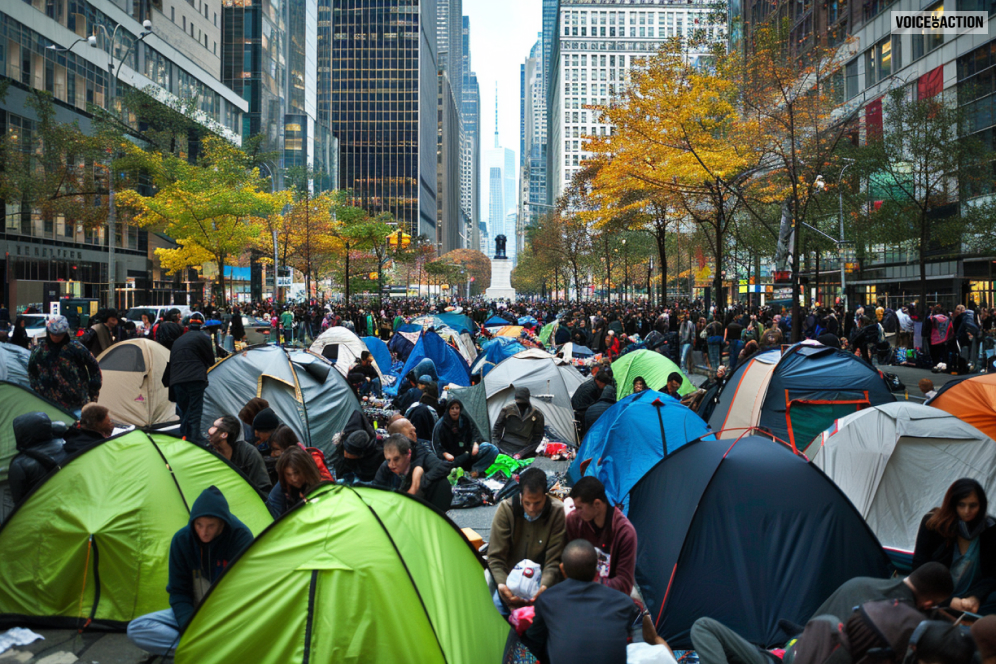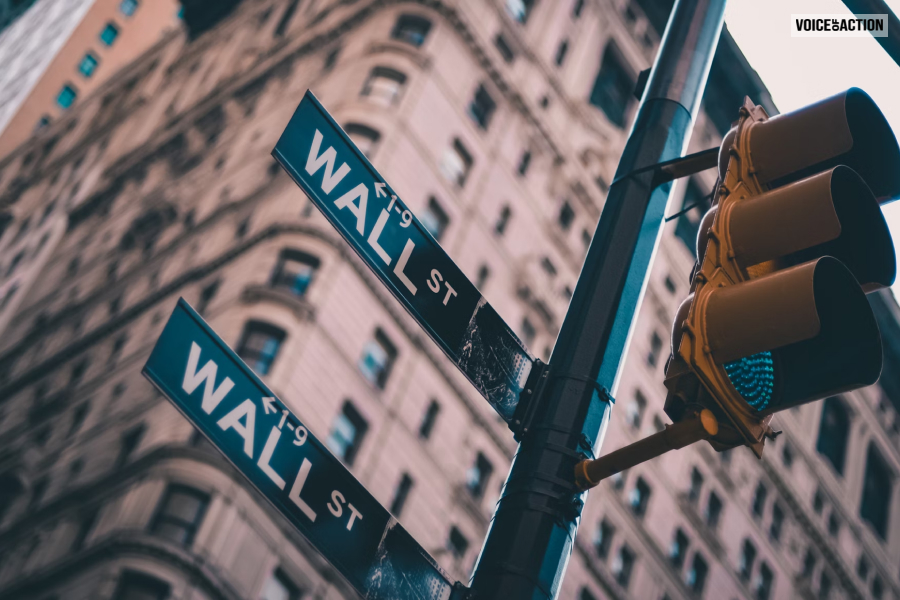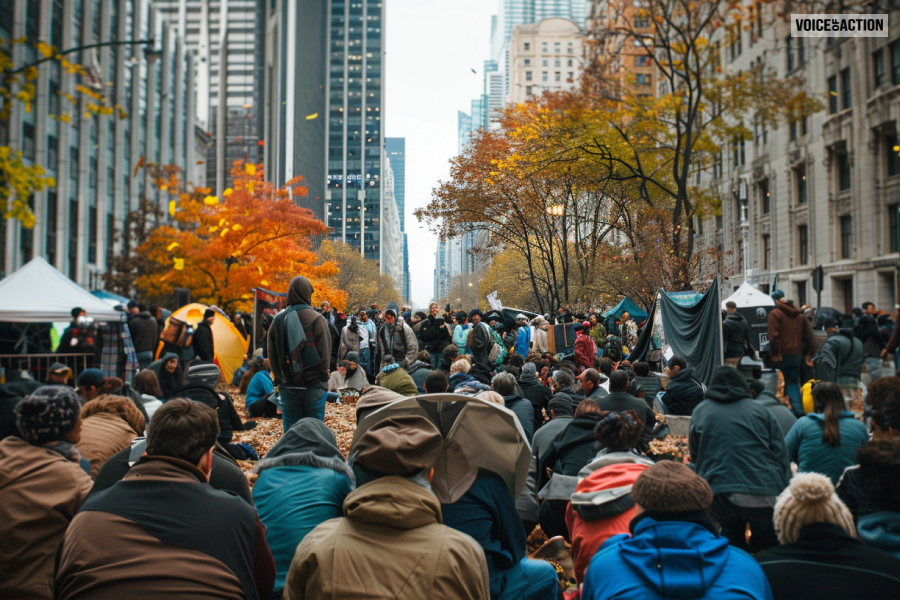Occupy Wall Street And The Fight Against Economic Inequality

The rich get richer; the poor get poorer- this is the sad truth of the society we thrive in. To combat financial distinctions, several movements have taken place in the world’s history. One such movement was the Occupy Wall Street movement.
The reformation was basically a left-wing populist one that fought economic injustice, fiscal influence in politics, and big finance. It started in New York City’s Zuccotti Park and extended for 59 days.
In today’s article, we will be talking about the movement in depth. So, make sure you stay connected till the end.
Background Of Occupy Wall Street

The initial protest began in the wake of the 2007-2008 financial crisis, which eventually led to the Great Recession. The financial downturn had a traumatic impact on American lives.
Millennials and young people born in 1980 had to suffer the most owing to the never-ending debate about the rich and poor. The movement took an ugly turn in the U.S. when leaders cut themselves off from all responsibilities and also managed to escape criminal charges.
The public was furious, and subsequently, the protests started increasing in Lower Manhattan. One could sense the increasing tension in the conversation between Micah White, senior editor of Adbusters, and Kalle Lasn, editor and co-founder of the same.
Men in the United States drew inspiration from Egyptians in terms of hosting a meaningful protest. This is when Hosni Mubarak had a victorious regime conducted in Tahrir Square in 2011.
The movement was initially planned by Lasn, who got OccupyWallStreet.org registered on 9th June. Later, he chose 17th September for the event as it was also his mother’s birthday.
In the subsequent months, multiple veteran organizers or anarchists formed a collection in New York City and planned the protest in the newly-formed assembly.
Proceedings Of The Protest

To prevent police from intervening and shutting down the site, the members did not choose an exact location. The location factor came into question after determining that the law enforcement knew about the protest already.
The former had constructed barricades across Wall Street or NYCGA’s initially preferred site. They wanted to carry out the rally next to the Charging Bull Statue.
But things didn’t go as planned, and scouts had to be redirected to Zuccotti Park instead. There were small groups at first to avoid unnecessary attention, but later, over 1,000 demonstrators initially joined.
What happened in the next 58 days?
The upcoming 58 days were problematic as the number of protestors started decreasing to a point where only 100 people or so were left. The camp had already arranged amenities like wireless Internet, free meals, as well as a lending library.
Sadly, there was still a lack of certain amenities like laundry machines or restrooms, which were later donated by businesses and a few local residents. As the movement kept growing, the operational expense reached $1,000 for a day.
This might sound extravagant, but it was way cheaper because supporters donated over $5,000 for a single day.
Occupy Wall Street As An Inspiration
It is needless to mention, the reformation inspired a lot of protests and groups fighting against social inequality in the U.S. Global support and efforts overflew and outlasted the movement itself.
For example, Occupy London spread to four different locations, some of which have still not been disclosed. On 15th October 2011, the reformation reached its apex after members joined together in another protest named “Global Day of Rage.”
More than 900 cities witnessed the demonstration. The Mayor of NYC, Michael Bloomberg, announced on October 10 that protestors of Occupy Wall Street could stay in Zuccotti Park.
Police Raids and Challenges
On 15th November, around 1:00 AM, the NYC police raided the Zuccotti Park and eliminated all protestors temporarily. More than 200 people were charged with non-compliance.
Mayor Bloomberg declared that he wanted to clear the park as there were increasing health concerns. Attorneys for protestors achieved success in obtaining a restraining order, although it was temporary.
Protestors were allowed to re-enter the park but without sleeping bags or tents. This was the eventual strategy to stop people protesting against economic injustice.
Was Occupy Wall Street A Cardinal Issue?

The movement, more or less like the Great Recession, expanded for a long time. The biggest similarity between the both was banking regulations and the way they triggered unlawful mortgage lending.
All of this paved the way for a housing bubble that had to burst one day. This is exactly when the financial crisis sparked across the globe, and so many people lost their livelihoods.
In the United States, things became worse. Middle-class people in the country witnessed their jobs vanishing into the air along with all the leftover wealth.
A bunch of American millennials between the 1980s and 2000s faced shrinking job markets. There was increasing student loan debt, and jobs were taken away forcefully from people.
The Media Effect

The Occupy Movement activists passed updates about their protests with the help of various mediums, of course, social media being number one. There was also an inclusion of print magazines, live streams, radio, film, and newspapers.
A lot like Occupy, there came an Occupy Media reformation. People came up with the initial idea of the OWSJ or The Occupied Wall Street Journal, which was a free newspaper. It was founded in October by Arun Gupta, an independent journalist.
The Occuprint Collective
Discovered by Josh MacPhee and Jesse Goldstein, the Occuprint Collective was formed by the creation of OWSJ’s special edition. It kept collecting and publishing images titled the Creative Commons, but the license was non-commercially used. The goal was to spread artwork in the form of movement.
Occupy Gazette
Editors of Dissent Magazine, Astra Taylor, Sarah Leonard, and Keith Gassen, came up with The Occupy together! Gazette. From 2011’s October to 2012’s September, it published five different issues. The sixth one was a commemorative issue that supported Cecily McMillan, an OWS activist, when she was on her trial.
Occupy Theory, Occupy Strategy
The Tidal magazine had a controversial publishing as the number was limited to just twice. Its very first copy released in 2011 in December, whereas the final issue was published in 2013’s March. The issue contained long poetry, art, and essays that lasted for about thirty pages. Every single circulation reached upto 12,000-50,000.
In Front and Center
The publication, “Critical Voices in the 99%,” was completely digital and managed by large numbers of OWS participants. It consisted of reflections and essays within the Occupy Wall Street. These aimed to express the voices of the marginalized community and raise significant issues in terms of fiscal differences.
Criticism Of The OWS Movement

Every social movement becomes the subject of criticism; some experience more, others experience less criticism. During the Occupy Wall Movement, various criticisms emerged, which, of course, lacked clear goals. There were false accusations and difficulties in conveying messages and supporting false bases.
Criticism in terms of inclusion
“We are the 99%” was the slogan of the movement. However, it was criticized for not including the 99% voice as lower-class people and minorities were expelled from the protest.
A few also characterized the movement as exceedingly non-black. It did not represent the requirements of immigrants as they should have been. There was clearly a lack of American-African presence, which triggered the sentiments even more.
Certain publications under the Occupy Media failed to ignite true changes not only in banks but also in Corporate U.S.A. A lot of scandals following the event supported the protest, including the HSBC money laundering and the London Whale Incident.
Criticism for not creating a sustainable base
Secondly, the movement also had to deal with criticism because of less sustainable support. Some critics were also of the opinion that the movement faded very quickly and lost its spark as soon as 2012 arrived.
Some others also argue that due to being too attached to its roots, the movement eventually lost its essence. There has been proof regarding the same when police threw out the protestors, and the movement just vanished into the air.
Finally, the Occupy Wall Street movements included anti-Semitic and anti-Zionist beliefs. Signage like “Zionist Jews running the big banks” triggered the sentiments of a few communities.
Conclusion
It must be noted that the lasting impacts of Occupy Wall Street aren’t restricted to Leftists. After the movement started gaining traction, there was a surge in Americans supporting the political spectrum.
The impact of the protest can be visible when governors tried curbing economic differences. But the real question is, how far have we succeeded with this?
With this, the article comes to an end. But do not forget to share your thoughts on this by commenting below.
Continue Reading:

























